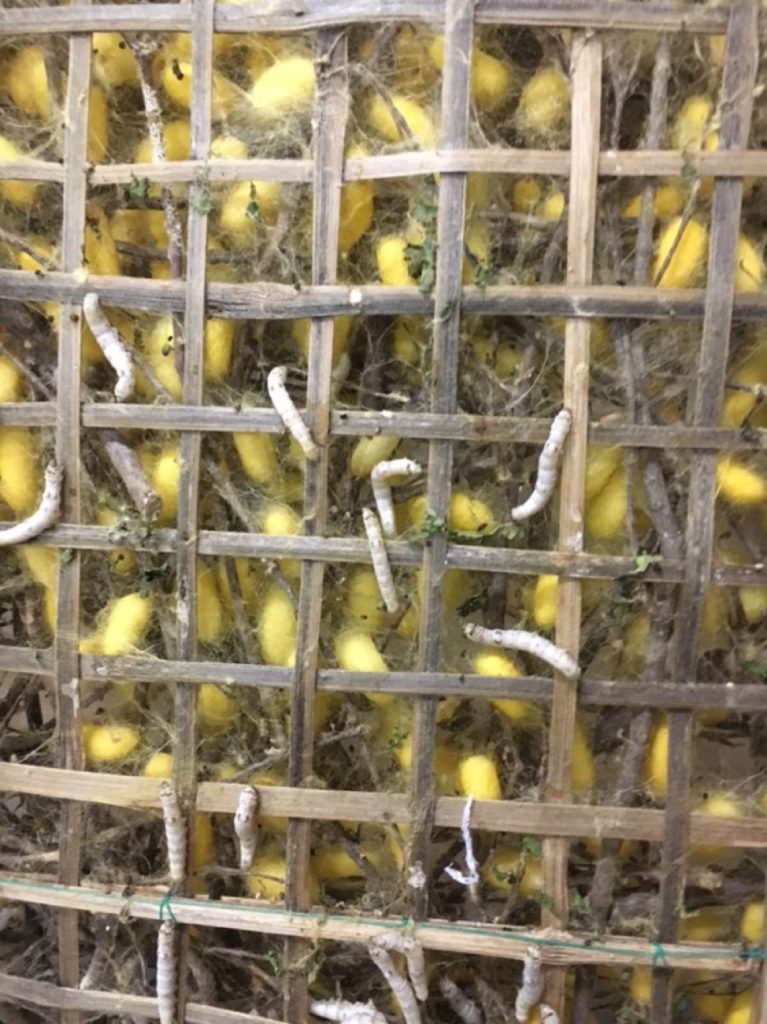Day 32-34: Hoi An
Day 32-34: Hoi An
An Overview of Hoi An
For those of you unfamiliar with Hoi An—as I was before arriving in this city—this is a city best know for its tailoring. Countless shops advertising “Custom Tailoring” fill the streets of Hoi An. From our hotel, we were a 20 minute walk from the Thu Bồn River and 20 minute drive from the An Bàng Beach. At night, the Thu Bồn River glimmers with the lights of paper lanterns. Wafts of cool air and savory scents drift out of stores and restaurants. I entered Hoi An with no knowledge of the place, and I left with an appreciation for a city I will never fully know. Here are some of the highlights of each full day we spent in Hoi An.
We were introduced to Hoi An through a walking tour in the rain. While on this tour, we stopped at Thắng lợi Fine Arts handicraft shop and were welcomed with a tour of the establishment. We saw how silk is made—from baby silk worm to silk pod to elegant fabric—and watched the employees at work. Many women were bent over lengths of silk with a needle in hand, painstakingly stitching art onto the fabric. There was a part of the store where we could order a customized article of clothing; many of us woke up the next day with deliveries of tailored clothing from Thắng lợi.
On our second day, we visited the Mỹ Lại massacre site. On March 16, 1968, a group of American soldiers entered the village of Mỹ Lại under the pretense that the village housed members of the Việt Cộng. Though the Charlie Company found a peaceful village, they acted on their orders to search and destroy; almost all villagers were slaughtered. We fell into a sober silence as we walked around the museum and saw photographs of mutilated Vietnamese people. The paths of the reconstructed village are covered with prints of bare feet and combat boots. We left Mỹ Lại feeling raw and heavy.
On our third day, we visited the ruins of Mỹ Sơn. Mỹ Sơn was the spiritual center of the Champa people for about 1,300 years. It is now a collection of ruined Hindu temples, worn Sanskrit carvings, and crumbling sculptures of Hindu gods. As we walked along the paths, our guide Tony warned us to stay off the grass because it is possible that there are still land mines in that area; the landscape is studded with crater mines.
Hoi An has helped me reassess the justification of war that was grilled into me during my youth. During our debrief after visiting Mỹ Lại, we struggled to comprehend how American soldiers—many of whom were close to our age—could commit such atrocities. It pains me to think that many of those men killed, maimed, and raped with their free will. I regret that I wasn’t able to see Mỹ Sơn in its former glory; rather, I must use my imagination to reconstruct the rubble. I say this not to demonize the American military, but to call attention to the need for a moral conscience during world conflict. I wonder if many more memorials and museums are going to be built before we favor peace over violence.







